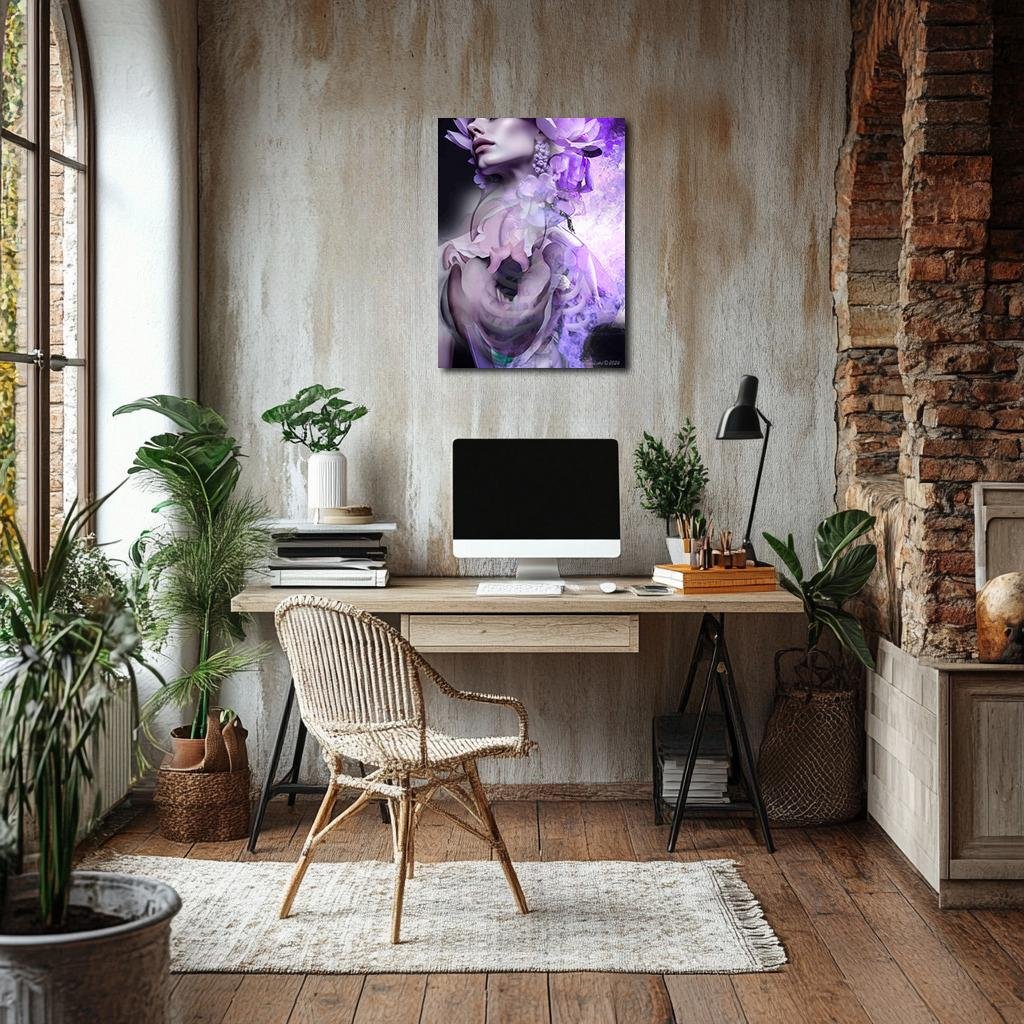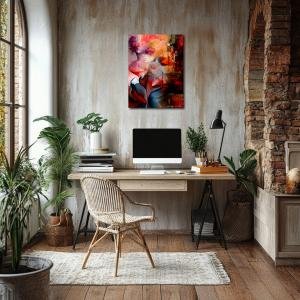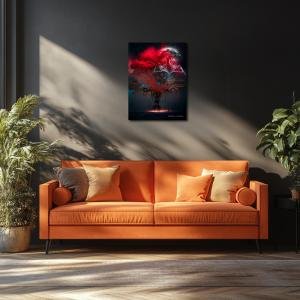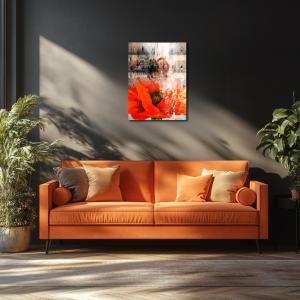Cathedral of the Flesh: Black Iris VI
Cathedral of the Flesh reinterprets Georgia O’Keeffe’s Black Iris VI as a radiant fusion of flower and anatomy, where violet petals blossom through rib and collarbone, dissolving the line between body and bloom. Layers of soft lavender and dusky amethyst wrap a translucent figure in sacred quiet, suggesting both resilience and surrender. The ribcage becomes a cathedral arch, cradling a luminous iris at the heart’s center. Purples breathe inward like incense, embodying grace, longing, and rebirth. This work echoes O’Keeffe’s spiritual intimacy while expanding her iris into a symbol of inner life—tender, raw, and transcendent.
Please see Below for Details…
Hotline Order:
Mon - Fri: 07AM - 06PM
404-872-4663
Cathedral of the Flesh reimagines Georgia O’Keeffe’s Black Iris VI as a luminous fusion of anatomical truth and floral mysticism, where petals become bone and beauty dissolves into essence. This reinterpretation reclaims the familiar centrality of O’Keeffe’s iris—not merely as a bloom, but as an altar of feminine sublimity. The visual narrative unfurls not from the flower but from within the body itself, where the human form is partially translucent, revealing the curvature of ribcage and clavicle beneath a halo of lilac and lavender bloom. This artwork does not separate the botanical from the corporeal—it melds them into one sanctified body of meaning.
O’Keeffe’s original Black Iris VI , painted in 1936, was long misunderstood through a Freudian lens, reduced to innuendo by male critics who failed to understand its spiritual intimacy. My reinterpretation seeks to rescue the iris from this narrow reading. Here, the iris is reborn as a metaphysical organ—a hybrid of inner flower and inner self. The woman’s face in the upper left quadrant rises in silent ecstasy, her eyes closed, her lips parted slightly as if whispering a prayer to the unseen. Around her, blooms erupt not from the earth, but from her very bones, threading through flesh and spirit in a sacred choreography of life.
Color drives the emotional tempo of this piece. The dominant purples—ranging from dusky amethyst to pale violet and deep orchid—evoke the tension between vulnerability and strength. Purple in this context is not simply royal; it is sacred, contemplative, and meditative. It represents the inner sanctum of the soul, the womb of personal myth where pain and beauty merge. This color wraps around the figure like incense, offering both concealment and revelation. The florals fade into her skin and bones, suggesting that to be soft is not to be weak, but to be open—willing to ache, to remember, to bloom despite rupture.
Beneath the woman’s collarbone, the ribs appear like sculpted cathedral arches, hollow yet divine. They are not cages but sanctuaries. Here, the idea of the body as a temple is literalized. The ribs cradle a central iris bloom that seems to pulse with a quiet fire, its petals shaped by both muscle and memory. From this center emanates a radiant aura—a burst of periwinkle mist that trails into the edge of the canvas like spiritual breath. It softens into pale pinks and whites, fading where the body dissolves into vapor, inviting the viewer to imagine the full figure without ever fully rendering it.
On the right, a veil of icy lavender mist cuts into the form, dissolving parts of the chest and arm into abstraction. This is not loss but transcendence—the self dissipating into an elemental state. The background darkens on the left, curving into a shade close to indigo-black, adding gravity to the otherwise weightless bloom. This darkness is not death—it is womb, void, and rest. It anchors the composition in O’Keeffe’s original language of shadowed mystery, where not all must be seen to be understood.
The woman’s ear is adorned with cascading orchid earrings, echoing the flower’s descent into the clavicle. This visual rhyme pulls the viewer downward, along the length of the throat, into the hollow of the chest. Here, the layers of transparency are deepest, revealing soft organ-like textures beneath floral ones. The illusion of x-ray vision within the soft gradients of violet plays with the dual meaning of interiority—what is felt versus what is seen.
In creating Cathedral of the Flesh , I aimed to distill Georgia O’Keeffe’s visual language of the macrocosmic flower into something both mythically intimate and corporeally honest. This is not a portrait of a flower, nor a body, but of feeling itself—an exaltation of being alive, broken, and beautiful in equal measure. Where O’Keeffe sought to slow us down, to make us truly see the iris, I sought to open the iris inward, to let it echo not just femininity but the universal interior—the place where bone meets bloom, and identity dissolves into essence.
Add your review
Your email address will not be published. Required fields are marked *
Please login to write review!
Looks like there are no reviews yet.








